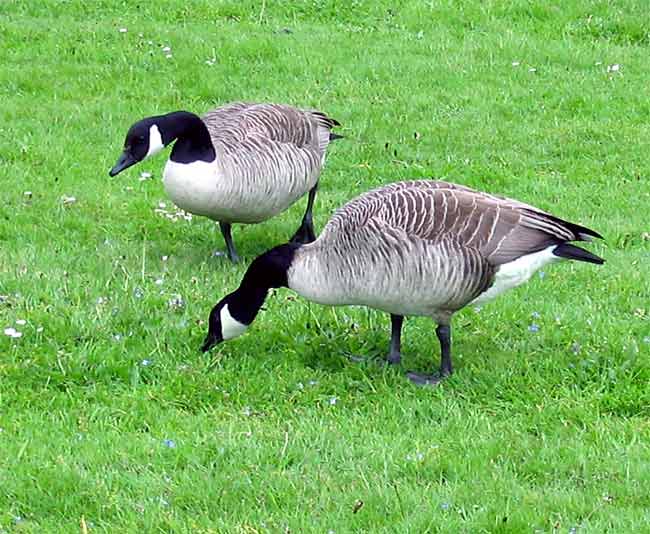Migratory Geese Downed Flight 1549 in Hudson River

The birds that brought down US Airways Flight 1549 in the Hudson River Jan. 15 were migratory Canada geese, scientists announced today.
Researchers at the Smithsonian Institution examined feathers from the bird strike to determine not only the species, but also that the Canada geese involved were from a migratory, rather than resident, population. The finding could help wildlife professionals develop policies and techniques to reduce the risk of future collisions.
The findings are detailed today in the journal Frontiers in Ecology and the Environment.
"Resident birds near airports may be managed by population reduction, habitat modification, harassment or removal, but migratory populations require more elaborate techniques in order to monitor bird movements," said Peter Marra, research scientist at the Smithsonian's Migratory Bird Center located at the National Zoo and lead author of the project's paper.
Most of the 11 subspecies of Canada geese migrate to the Arctic and sub-Arctic regions to nest. The total number of resident Canada geese in the United States is about 3.2 million and has increased dramatically during the past several decades, according to the U.S. Fish and Wildlife Service.
The US Airways plane took off from New York's LaGuardia Airport, colliding with a flock of geese approximately 2,900 feet above the ground, extensively damaging both engines five miles from the airport. Pilot Chesley (Sully) Sullenberger III landed in the Hudson River and all 155 people on board survived with few serious injuries.
Investigators at the National Transportation Safety Board later sent feathers and tissue extracted from the plane's engines to the Smithsonian in Washington, D.C., for analysis.
Sign up for the Live Science daily newsletter now
Get the world’s most fascinating discoveries delivered straight to your inbox.
Researchers in the Feather Identification Laboratory at the Smithsonian's National Museum of Natural History used molecular genetic techniques and feather samples from museum collections to determine that the birds involved were Canada geese (Branta canadensis). This is one of the largest species of birds in North America, and the individual birds involved are estimated to have weighed about 8 pounds. Some Canada geese weigh up to 15 pounds.
The team then examined the feathers' stable-hydrogen isotopes, which can serve as geographic markers since they reflect the types of vegetation in the bird's diet at the time it grew new feathers after molting. Using a mass spectrometer, which measures the masses and relative concentrations of atoms and molecules at high precision, the scientists compared the bird-strike feather samples with samples from migratory Canada geese and found them similar to those from the Labrador region.
"It is important to not only know what species of birds are involved in collisions, but to also understand the role that migration plays in the larger picture," said Carla Dove, program director at Feather Identification Laboratory. "The more information we are able to gather in cases like this, the more we will be able to reduce the risks of bird strikes in the future."
Although reporting bird strikes is not currently required by the Federal Aviation Administration, it is critical for researchers, according to Marra.
"Knowing the frequency and timing of collisions is important," he said. "Otherwise we are missing valuable information that could reveal patterns of frequency, location and species involved."
Integrating this information with bird migration patterns and existing wildlife mitigation programs at airports could minimize the risk of collisions with birds.











